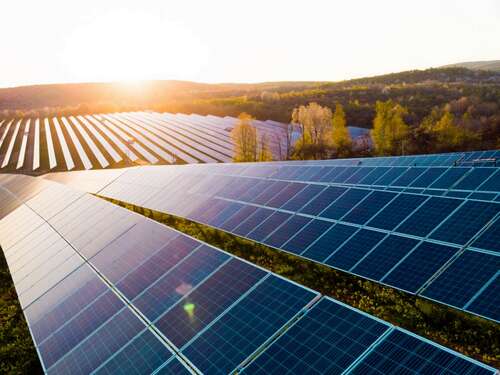
The Bullstown Solar Farm is the first of a series of ESB-constructed solar farms, construction of which is expected to start early this year.
German solar energy company Greencells has won the contract for the first of a series of solar farms being constructed by ESB.
The farm, known as Bullstown Solar Farm, will be located in the south-east of Ashbourne, Co Meath and construction is expected to begin this year.
Once complete, the €13m project is expected to generate 8.5MW of electricity, which could provide enough capacity to power more than 2,000 homes.
This is the first of three wholly owned ESB solar farms, representing a total investment of almost €200m.
While wind energy remains the dominant source of renewable electricity generation in Ireland, solar energy’s presence is set to grow significantly over the coming years.
Danish-headquartered energy company Ørsted has been developing a number of solar energy projects in Ireland recently, teaming up with renewable energy developer Terra Solar to progress them.
Meanwhile, Dublin-based Power Capital secured €240m in January 2023 to develop solar farms in Ireland and Irish solar start-up UrbanVolt has seen success to the point of bagging €26m in funding for a European expansion.
ESB’s solar development manager, Eoin Naughton, said solar energy provides an opportunity for landowners and communities to benefit from the clean energy transition.
“Projects like this one will help to reduce our dependency on imported fossil fuels whilst also contributing to decarbonising our electrical network. We now look forward to working with Greencells, one of the largest European solar EPC providers, to deliver Bullstown Solar Farm.”
The challenges with renewables
But while investment in renewable energy projects such as this are a positive step away from fossil fuels, concerns about Ireland’s energy grid remain.
A KPMG report at the end of last year suggested that nearly all industry experts believe the country will fail to meet key targets in its Climate Action Plan. It also highlighted concerns that Ireland’s grid is not strong enough to handle the number of solar and wind energy projects that would be required to hit the country’s 2030 energy goals.
Outside of Ireland, there are also concerns while the hardware costs of installing solar energy systems have reduced massively over the last number of decades, the ‘soft technology’ costs have not reduced as much, which could hamper the industry in the future.
Additionally, there is a dark side of solar power in that the panels are mostly made of low-value material that, when replaced with more efficient models, could start to generate huge amounts of waste.
10 things you need to know direct to your inbox every weekday. Sign up for the Daily Brief, Silicon Republic’s digest of essential sci-tech news.

